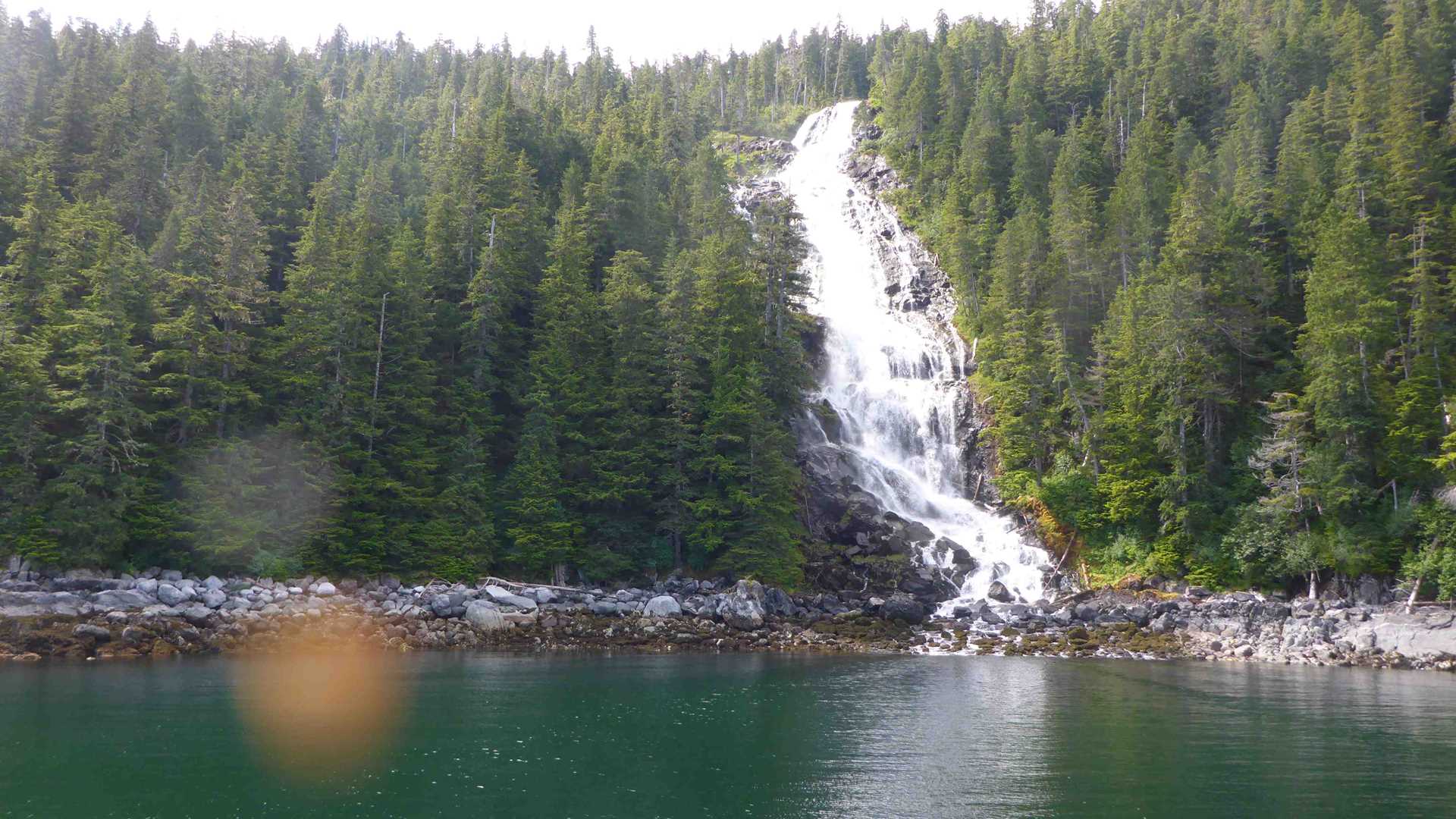Having stayed up far too late off Petersburg for last night’s fireworks display, we stumbled groggily onto the bow in bright 6 a.m. sunshine, some still in pajamas, to watch an acrobatic display of humpback whales. Some launched bodily into the air, while others rolled along the surface, turning and slapping their giant pectoral flippers (from which their genus gets its name Megaptera–“big wing”).
It made a fine prelude to our late-morning visit from Dr. Andy Szabo, director of the Alaska Whale Foundation, who spoke eloquently about the complexity and culture of this beautiful species. Just ahead was the narrow entrance to Red Bluff Bay, starkly heralded by the eponymous red bluff–barren rock surrounded by millions of acres of forest. The ultramafic rock, so rich in iron (hence the red color) and magnesium, creates poor soils and supports only meager plant growth. Inside the bay though, life could not have been richer, and we approached and admired a waterfall pouring down the mountainside.
Ship-bound all morning, we eagerly approached Lake Eva on Baranof Island, where we fanned out for kayaking and expedition landing craft rides through the salmon-filled estuary and hikes through the old growth forest.
My group devoted all afternoon to the long hike up to Lake Eva itself, along the way pausing streamside to watch salmon swirl in a pool under the roots of the old growth trees they help nourish. These are sockeye salmon making their way up their natal stream–done eating, never to see the ocean again, using every ounce of stored energy to spawn, their final act. Farther up the trail, we found a grove of huge old-growth Sitka spruce. We craned our necks upward, and wondered at their great antiquity. Speaking to the group about the history of logging on the Tongass, I guessed that this tree was at least 500 years old, having germinated before the English language was ever spoken in western North America. Just another unforgettable day aboard National Geographic Sea Bird.






